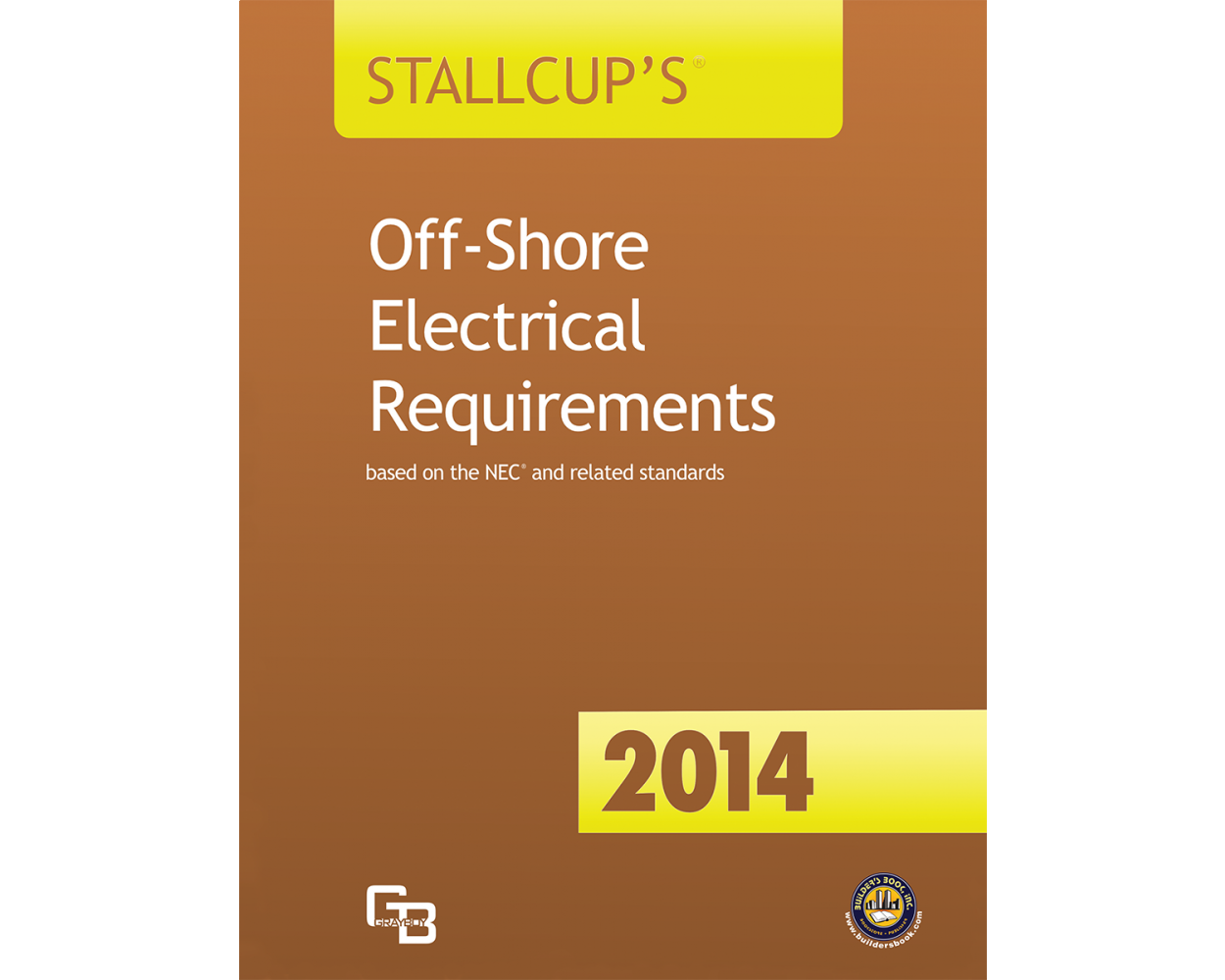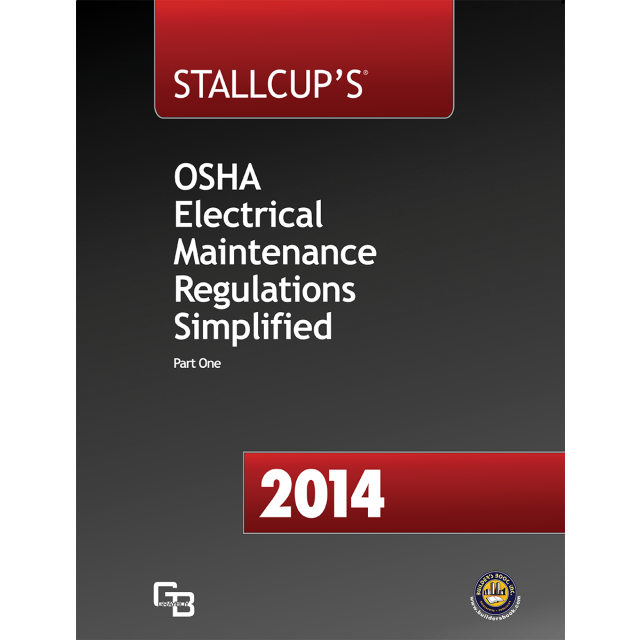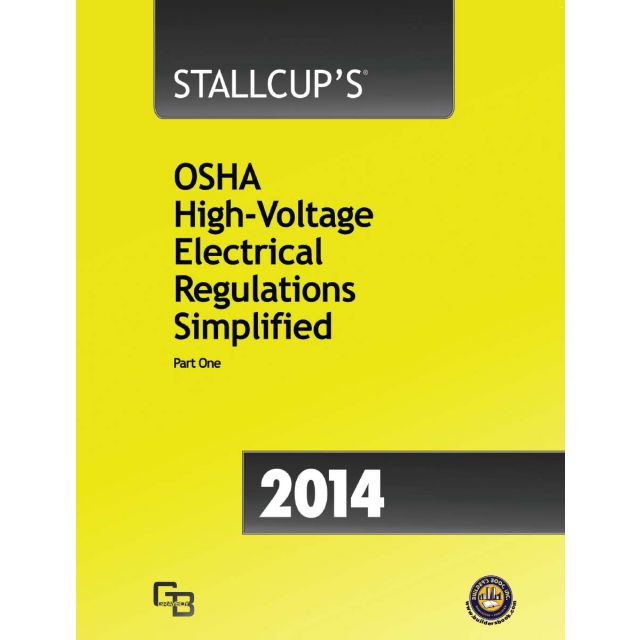2014 Stallcup's Off-Shore Electrical Requirements
Special Price $37.30 Regular Price $41.44
In stock
Product Code
9781622701544
STALLCUP'S OFF-SHORE ELECTRICAL REQUIREMENTS BASED ON THE NEC 2014 & RELATED STANDARDS
James Stallcup, Sr. & James Stallcup, Jr.
Number of Pages: 224
The economics of modern offshore facilities have caused a significant increase in the complexity of marine platform electrical systems. The corresponding increase in the use of electric power and electrical and electronic controls demand a better understanding of electrical principles in order to promote human safety and aid in the prevention of fire or explosion.
Many items of electrical equipment represent a potential ignition source if exposed to a fuel source; however, properly designed and maintained electrical equipment can be safely applied even where hazardous gases or vapors are present. On offshore platforms, particular emphasis must be placed on electrical installations because of the presence of hydrocarbons, the close confines, and the adverse environmental conditions. Because of safety considerations and governmental rules and regulations, it is essential that future installations comply with applicable codes and regulations and that the integrity of existing systems be maintained.
Prior to 1971 there literally were no electrical regulations to follow (except for safety of life at sea requirements of the U.S. Coast Guard, i.e. NAVAID lights, and abandon platform alarms) for installations that were in fact outside of state boundaries and located in federal waters.
In 1971, the United States Department of the Interior through the United States Geological Survey Conservation Division (USGS) made compliance with the National Electrical Code mandatory in offshore federal waters of the Outer Continental Shelf (thus the term USGS OCS Orders).
These regulations also require that facilities located on the Outer Continental Shelf of the United States be electrically classified in accordance with the American Petroleum Institute Recommended Practice RP500 titled, “Classification of Areas for Electrical Installations at Drilling Rigs and Production Facilities on land and on Marine Fixed and Mobile Platforms.”
Table of Contents
CHAPTER 1: ELECTRICAL SYSTEMS
CHAPTER 2: HUMAN SAFETY
CHAPTER 3: CLASSIFICATION
OF AREAS
CHAPTER 4: CRITERIA FOR SELECTION OF HAZARDOUS AREA ELECTRICAL EQUIPMENT
CHAPTER 5: CONSTRUCTION
METHODS
CHAPTER 6: REPAIRS AND
TEMPORARY WIRING
CHAPTER 7: CONDUIT, CABLE SEALS AND SEALING METHODS
CHAPTER 8: ELECTRICAL EQUIPMENT AND INSTALLATION REQUIREMENTS
CHAPTER 9: LOCKOUT/TAGOUT
CHAPTER 10: ELECTRICAL AND DRAWING SPECIFICATIONS
CHAPTER 11: DESIGN AND INSTALLATION EXAMPLES
APPENDIX
A DEFINITIONS
B ACRONYMS
C ABBREVIATIONS
D INFORMATION TABLES
TOPIC INDEX
| Price | $41.44 |
|---|---|
| Customer Service | Customer ServiceWe're Here To Help Call us anytime during our customer service hours... Monday through Friday - 8:30 am to 4:30 pm (Pacific) Order Questions: TOLL FREE, 800-273-7375 (Outside the U.S. call 818-887-7828). Our Address: 8001 Canoga Avenue Canoga Park, CA 91304 US Phone: 800-275-2665 E-mail: sales@buildersbook.com
|
| Description | STALLCUP'S OFF-SHORE ELECTRICAL REQUIREMENTS BASED ON THE NEC 2014 & RELATED STANDARDS James Stallcup, Sr. & James Stallcup, Jr. Number of Pages: 224 The economics of modern offshore facilities have caused a significant increase in the complexity of marine platform electrical systems. The corresponding increase in the use of electric power and electrical and electronic controls demand a better understanding of electrical principles in order to promote human safety and aid in the prevention of fire or explosion. Many items of electrical equipment represent a potential ignition source if exposed to a fuel source; however, properly designed and maintained electrical equipment can be safely applied even where hazardous gases or vapors are present. On offshore platforms, particular emphasis must be placed on electrical installations because of the presence of hydrocarbons, the close confines, and the adverse environmental conditions. Because of safety considerations and governmental rules and regulations, it is essential that future installations comply with applicable codes and regulations and that the integrity of existing systems be maintained. Prior to 1971 there literally were no electrical regulations to follow (except for safety of life at sea requirements of the U.S. Coast Guard, i.e. NAVAID lights, and abandon platform alarms) for installations that were in fact outside of state boundaries and located in federal waters. In 1971, the United States Department of the Interior through the United States Geological Survey Conservation Division (USGS) made compliance with the National Electrical Code mandatory in offshore federal waters of the Outer Continental Shelf (thus the term USGS OCS Orders). These regulations also require that facilities located on the Outer Continental Shelf of the United States be electrically classified in accordance with the American Petroleum Institute Recommended Practice RP500 titled, “Classification of Areas for Electrical Installations at Drilling Rigs and Production Facilities on land and on Marine Fixed and Mobile Platforms.” Table of Contents CHAPTER 1: ELECTRICAL SYSTEMS CHAPTER 2: HUMAN SAFETY CHAPTER 3: CLASSIFICATION OF AREAS CHAPTER 4: CRITERIA FOR SELECTION OF HAZARDOUS AREA ELECTRICAL EQUIPMENT CHAPTER 5: CONSTRUCTION METHODS CHAPTER 6: REPAIRS AND TEMPORARY WIRING CHAPTER 7: CONDUIT, CABLE SEALS AND SEALING METHODS CHAPTER 8: ELECTRICAL EQUIPMENT AND INSTALLATION REQUIREMENTS CHAPTER 9: LOCKOUT/TAGOUT CHAPTER 10: ELECTRICAL AND DRAWING SPECIFICATIONS CHAPTER 11: DESIGN AND INSTALLATION EXAMPLES APPENDIX A DEFINITIONS B ACRONYMS C ABBREVIATIONS D INFORMATION TABLES TOPIC INDEX |
Check items to add to the cart or









